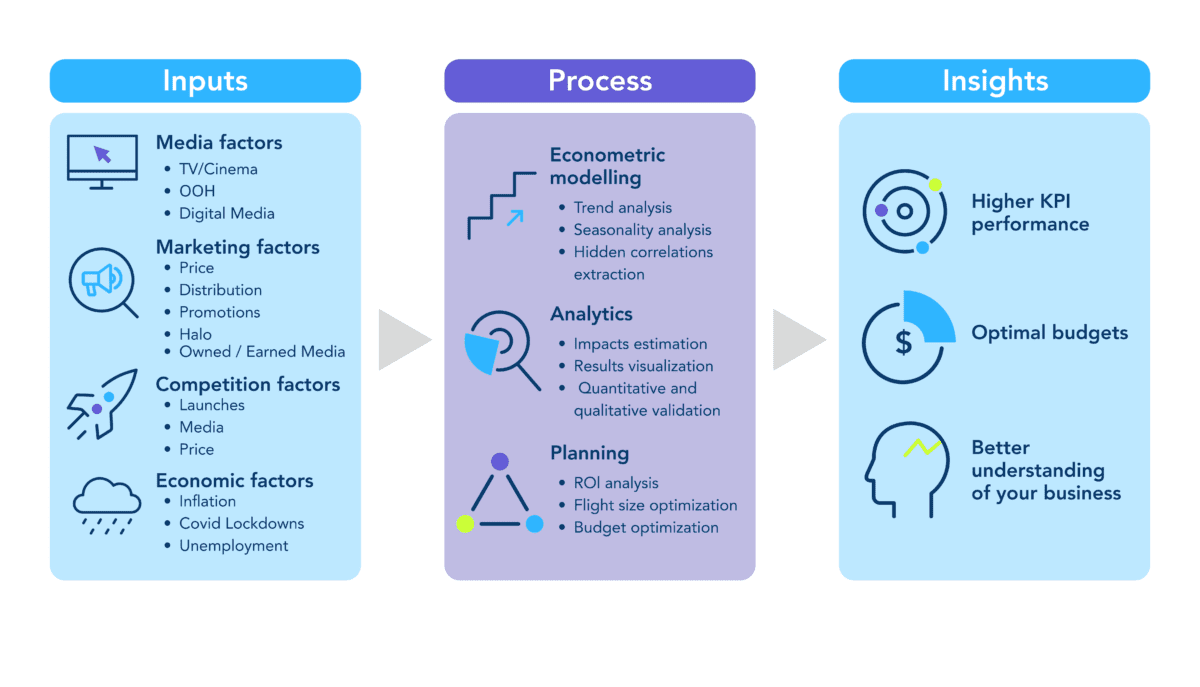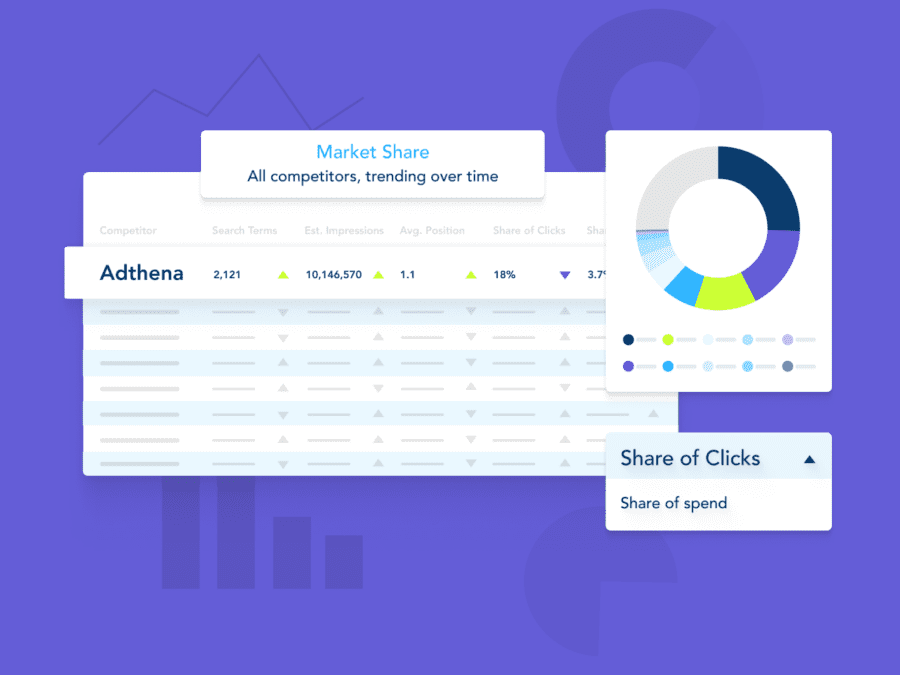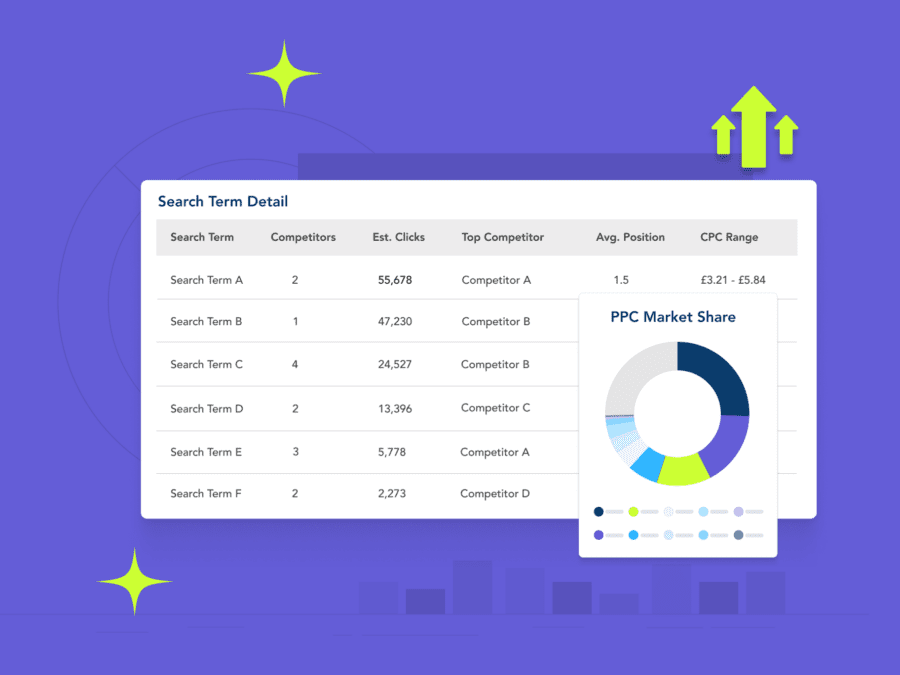Advertisers today need precision in their media spend, and Media Mix Modeling (MMM) is the key to unlocking it. To stay competitive, marketing teams are turning to MMM to decode which factors impact campaign performance and where to allocate budgets most effectively. With more media channels than ever and fluctuating consumer behaviors, MMM provides a clear, data-focused approach to enhance strategic choices. But what exactly is MMM, and how does it benefit marketing strategies?
Let’s dive into MMM’s role in aligning media investments with business goals, addressing key challenges, and leveraging search intelligence to get the most from marketing dollars.
What is Media Mix Modeling?
Media Mix Modeling (MMM) is a statistical tool that helps marketers understand the impact of various media channels, such as TV, search ads, and social media, on overall sales and conversions. By analyzing past performance data, MMM identifies which channels contribute most to business success, accounting for factors like seasonality and external economic conditions.

Why is Media Mix Modeling important?
The primary challenge it addresses is the uncertainty in determining which factors positively or negatively impact sales, revenue, and engagement, especially in a crowded digital space.
Understanding which media drives ROI allows marketers to focus resources on the highest-performing channels. This strategic approach is critical for aligning marketing efforts with business objectives and improving ROI as consumer behaviors evolve.
How Media Mix Modeling supports effective media spend allocation
Each channel has its unique contributions, from increasing brand awareness to generating clicks and conversions. By offering insights into the effectiveness of each channel, MMM allows marketers to adjust spending dynamically, maximize the return on each dollar spent, and anticipate the performance of future campaigns.
For instance, a retailer might observe a sudden dip in online sales and attribute it to various external causes: an economic shift, seasonal changes, or a surge in competitor activity. Here, MMM steps in to analyze each channel (paid search, social media, and display ads) while accounting for external factors. Through MMM, marketers gain insights into where each dollar makes the most impact, guiding future investments toward areas with the highest potential returns.
This holistic view of media analysis enables marketers to fine-tune strategies for both short term wins and long term brand growth.
How Adthena’s Search Intelligence data enhances Media Mix Modeling
The most effective Media Mix Models (MMM) bring together granular, accurate, and actionable data from multiple media channels. Since MMM output quality is directly tied to input quality, digital channels are often favored due to their structured and precise data. For digital display, first-party cookies, and some other channels, data accuracy is high, but it can be murkier for walled-garden platforms like Meta, X, and Google. This is where Adthena supports marketers in achieving reliable insights.
Adthena’s impression-level data, covering both brand and competitor performance, offers marketing decision makers the opportunity to understand key competitors in the paid search space. Metrics like Share of Impressions, Clicks, and Spend across various sectors deliver insight into market saturation and competitor strategies. Incorporating this search intelligence into a media mix model and using observational search data to help allocate budgets across and within channels (e.g. SEM/SEO) can prove invaluable.
A major UK retailer generated a quarterly report with Adthena data, assessing their share of impressions compared to key competitors. This data informed their MMM, helping the marketing team and their econometric partner craft a strategy that ensures media investments reach target KPIs. By reviewing this data quarterly, businesses gain a retrospective on the effectiveness of past strategies, allowing for adjustments that align with long term objectives and avoid diminishing returns.
Essential Media Mix Modeling tips for 2025 success
- Incorporate real-time data: With rapid shifts in consumer behavior, updating your MMM with real-time data helps you adapt your strategy to seasonal trends and unexpected changes in the market.
- Integrate external factors: Factors like economic shifts, consumer sentiment, and environmental events (e.g., weather impacts) are increasingly critical. Account for them in your MMM to make your analysis more robust and predictive.
- Prioritize cross-channel consistency: Ensuring consistent messaging across all channels maximizes the impact of each channel and helps MMM provide a clearer picture of your ROI.
Driving growth through Media Mix Modeling
Media Mix Modeling provides retailers with the strategic insights needed to make data-informed decisions, maximizing their media budget’s impact across channels. By incorporating search intelligence data from Adthena, businesses can further refine these strategies to stay competitive in the fast-paced digital marketplace. Through MMM, marketers not only achieve quarterly targets but also set the foundation for sustained growth while adapting to market changes.
Want to see how search intelligence can enhance your marketing strategy? Request a demo today.




